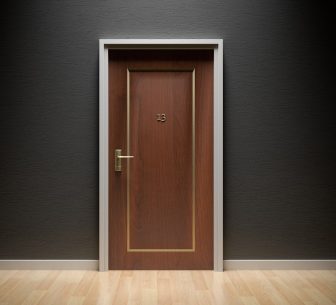 Here at EYE we receive press releases by the dozen, each and every day. We often wonder at the thought-process of the PR execs as they toil away, trying to find that elusive angle that will get their client’s message to the top of the pile. Sometimes we read with open-mouthed astonishment at the stretching of credibility taking place before our eyes, other times we applaud the creativity.
Here at EYE we receive press releases by the dozen, each and every day. We often wonder at the thought-process of the PR execs as they toil away, trying to find that elusive angle that will get their client’s message to the top of the pile. Sometimes we read with open-mouthed astonishment at the stretching of credibility taking place before our eyes, other times we applaud the creativity.
So, hats off to the PR firm behind this one for obliquely catching the upcoming spooky Halloween vibe. But as to whether the number 13 in this ‘research’ really puts the wind up buyers…
Research by central London estate agency, Bective, has revealed that superstitions surrounding the number 13 are alive and well across the property market, with every region of England and Wales seeing the average sold price for No.13 homes slump below the rest of the market – except one.
No.13 price superstitions
Bective analysed sold prices records from the Land Registry and found that over the last year, properties selling with the No.13 have seen an average sold price of £208,000. This is £15,750 less than the average sold price of £223,750 across the rest of the market.
The West Midlands is home to the most superstitious buyers, with No.13 homes selling for £23,000 less, while Yorkshire and the Humber (-£21,500), and Wales (-£19,000) are also home to some of the biggest reductions for the price paid for a No.13 property versus the rest of the market.
London homebuyers undeterred by the No.13
In fact, the negative trend for No.13 sold prices is apparent across every region of England and Wales apart from one – London.
In London, the average price paid for a No.13 property comes in at £500,000, £1 more than the average sold price seen across the rest of the market.
However, when it comes to London’s high-end market, the No.13 seems to be more of a blessing than a curse for prime London homeowners.
Prime London homebuyers pay £628k more for No.13 homes
Bective’s analysis shows that across London’s prime postcodes over the last 12 months, No.13 properties have sold for an average of £1,775,903.
Prime London homes across the rest of the market have sold for an average of £1,147,835 during the same time, meaning prime London homebuyers have paid £628,000 more on average for a No.13 property.
Bective’s Head of Sales, Craig Tonkin, commented:
“Even in the modern age, it seems as though superstitions continue to play a part in society and this is particularly apparent when it comes to the number 13 and the price we’re willing to pay for a property that has been tarnished with this unlucky number.
“However, as often is the case, the London market goes against the grain in this respect and homebuyers across the capital remain unphased about the potential ill will that could arise from a number 13 property purchase.
“In fact, the number 13 even carries a property price premium in London’s prime market, with the capital’s best-heeled buyers paying hundreds of thousands more despite the wider superstitions associated with the number.”


Has the market in London really been so quiet as to allow even consideration of research into such tosh.
What has been learnt from this? Zilch !
Time for Bective to find some new researchers or PR company.
You must be logged in to like or dislike this comments.
Click to login
Don't have an account? Click here to register
YET MORE “research” for the sake of column inches!
What a pity that common sence or reasoning is not applied when coming up with this PR puffery.
I stand to be corrected, but as far as I am aware it has been several decades since the last ‘No 13’ was approved for a door number by the majority of planners in the UK; and many builders, recognising there was some resistance to living in ‘No 13′ had numbered their new homes accordingly for some time before the planners’ direction – and in effect most likely brought about the change.
Consequently, in the main those properties that now carry the number ’13’ are older, and therefore lag behind the “average price” – which is generally positively influenced by sales of new builds, with their price premium, increasing the average property price paid in any year.
So why do PCL properties buck the trend? Simples – far less ‘new-builds’; and those that do meet that criteria will be far smaller than the existing housing stock, therefore attracting lesser prices.
Statistics and data are wonderful things. But like sharp objects, they are best kept away from those that don’t understand what harm they can cause.
“So, hats off to the PR firm behind this one…”
Not mine. I’m afraid “could do better” is the call of the day from me.
You must be logged in to like or dislike this comments.
Click to login
Don't have an account? Click here to register